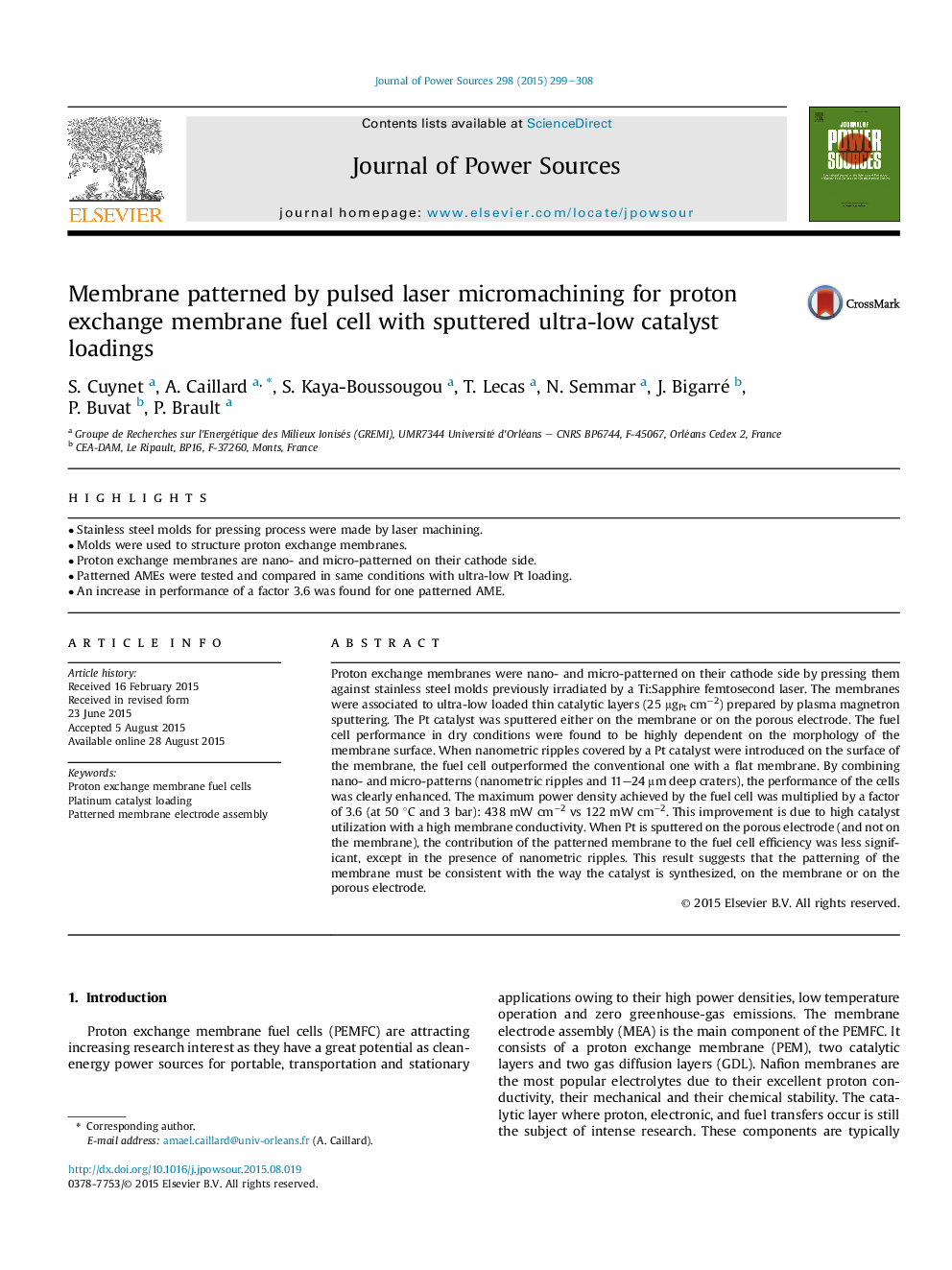| کد مقاله | کد نشریه | سال انتشار | مقاله انگلیسی | نسخه تمام متن |
|---|---|---|---|---|
| 1283820 | 1497934 | 2015 | 10 صفحه PDF | دانلود رایگان |
• Stainless steel molds for pressing process were made by laser machining.
• Molds were used to structure proton exchange membranes.
• Proton exchange membranes are nano- and micro-patterned on their cathode side.
• Patterned AMEs were tested and compared in same conditions with ultra-low Pt loading.
• An increase in performance of a factor 3.6 was found for one patterned AME.
Proton exchange membranes were nano- and micro-patterned on their cathode side by pressing them against stainless steel molds previously irradiated by a Ti:Sapphire femtosecond laser. The membranes were associated to ultra-low loaded thin catalytic layers (25 μgPt cm−2) prepared by plasma magnetron sputtering. The Pt catalyst was sputtered either on the membrane or on the porous electrode. The fuel cell performance in dry conditions were found to be highly dependent on the morphology of the membrane surface. When nanometric ripples covered by a Pt catalyst were introduced on the surface of the membrane, the fuel cell outperformed the conventional one with a flat membrane. By combining nano- and micro-patterns (nanometric ripples and 11–24 μm deep craters), the performance of the cells was clearly enhanced. The maximum power density achieved by the fuel cell was multiplied by a factor of 3.6 (at 50 °C and 3 bar): 438 mW cm−2 vs 122 mW cm−2. This improvement is due to high catalyst utilization with a high membrane conductivity. When Pt is sputtered on the porous electrode (and not on the membrane), the contribution of the patterned membrane to the fuel cell efficiency was less significant, except in the presence of nanometric ripples. This result suggests that the patterning of the membrane must be consistent with the way the catalyst is synthesized, on the membrane or on the porous electrode.
Journal: Journal of Power Sources - Volume 298, 1 December 2015, Pages 299–308
